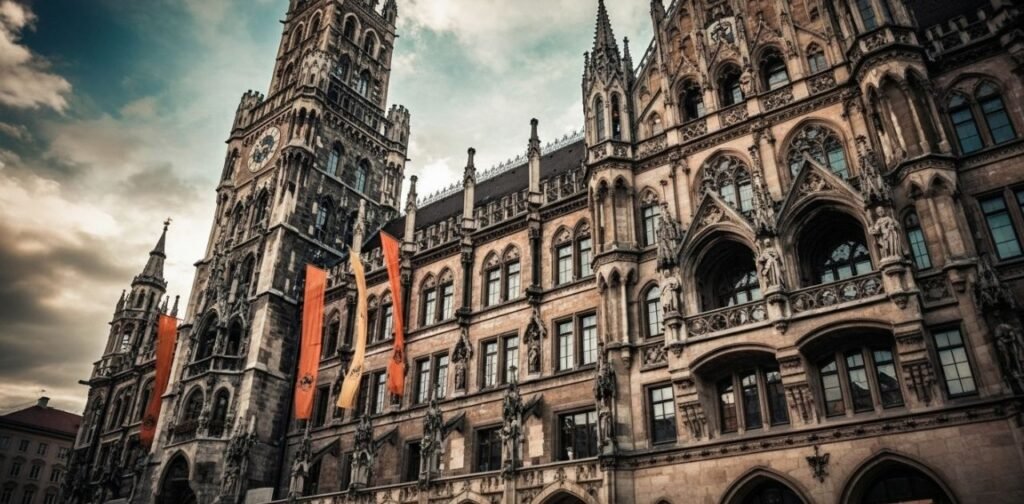Introduction
Every great city has its symbolic center — a place where history, culture, and daily life merge into one living story. For Zagreb, Croatia, that place is Маријин трг (Marijin Trg), also known as Mary’s Square. Nestled in the heart of the capital, Marijin Trg is more than just an urban space. It is a reflection of Croatia’s history, spirituality, resilience, and evolving cultural identity.
Surrounded by some of the city’s most iconic landmarks, including the Cathedral of the Assumption of the Blessed Virgin Mary, Marijin Trg represents both a spiritual sanctuary and a bustling hub of civic life. Visitors are often drawn here not only to admire the architectural grandeur but also to experience the rhythm of Zagreb itself. The square has seen centuries of transformation — from medieval trade and religious ceremonies to modern gatherings, festivals, and daily social life.
In this article, we will explore the history, architecture, cultural importance, and modern-day relevance of Marijin Trg. Whether you are a traveler, a history enthusiast, or someone curious about Croatia’s heritage, Marijin Trg offers insights that go beyond stone and square — it tells the story of a nation.
The Historical Legacy of Маријин трг
Marijin Trg’s origins can be traced back centuries, deeply tied to Zagreb’s growth as a regional and cultural capital. Named in honor of the Virgin Mary, the square reflects the strong spiritual traditions of the Croatian people.
Medieval Roots
In the medieval era, the square functioned as a religious and commercial hub. Local farmers, artisans, and merchants gathered here to trade goods, while worshippers flocked to the cathedral that overlooked the square. Its dual identity — a place of faith and trade — shaped the character of Zagreb as a city that balanced spirituality with civic progress.
The Cathedral Connection
The most dominant structure on Marijin Trg is undoubtedly the Cathedral of the Assumption of the Blessed Virgin Mary, often simply called Zagreb Cathedral. With its soaring twin spires, Gothic architecture, and centuries-old history, the cathedral stands as a guardian of the square. For centuries, it has been the focal point of pilgrimages, religious ceremonies, and national celebrations.
Symbol of Resilience
Marijin Trg has also borne witness to struggles. From Ottoman invasions and wars to natural disasters and modern political upheavals, the square has endured. Each restoration of the cathedral and surrounding structures has symbolized the resilience of Zagreb’s people, their faith, and their determination to preserve cultural identity.
Architectural Beauty and Surrounding Landmarks
What makes Marijin Trg truly remarkable is the harmony of its architecture and surrounding landmarks. The square is not only defined by the cathedral but also by a collection of historical and civic buildings that create a sense of timeless grandeur.
Zagreb Cathedral
Standing at nearly 108 meters, the spires of Zagreb Cathedral dominate the skyline and are visible from almost any part of the city. Its interior, adorned with stained glass, sculptures, and relics, invites visitors into a sacred atmosphere. The cathedral is not just a religious site; it is also a masterpiece of Gothic Revival architecture.
Archbishop’s Palace
Adjacent to the cathedral lies the Archbishop’s Palace, a symbol of ecclesiastical authority and a reminder of the Church’s role in shaping Zagreb’s cultural and political history. Its elegant facades add depth to the square’s architectural ensemble.
Statues and Monuments
Marijin Trg is also home to the famous golden statue of the Virgin Mary, surrounded by angels at the center of the square. This monument is not only a religious symbol but also a piece of public art that enhances the square’s beauty.
Civic Buildings and Streets
Surrounding the square are historic streets and civic buildings that reflect Zagreb’s layered past. Narrow cobblestone alleys lead to cafes, shops, and hidden courtyards, creating a seamless blend between the sacred and the social.
Cultural Significance and Modern-Day Life
Marijin Trg is not a relic frozen in time. It is a living, breathing square that continues to play a central role in Zagreb’s cultural and civic life.
A Place of Faith
Pilgrims and worshippers continue to visit the square to honor the Virgin Mary, especially during feast days and religious festivals. The annual celebrations attract both locals and international visitors, reinforcing the square’s role as a spiritual beacon.
Civic and Social Hub
Beyond its religious importance, Marijin Trg is a gathering place for locals. From morning coffee in nearby cafes to evening strolls, the square embodies the rhythm of Zagreb’s daily life. It also serves as a backdrop for public events, concerts, and national ceremonies.
Tourism Magnet
For travelers, Marijin Trg is one of the most visited sites in Zagreb. It is often the starting point of city tours, thanks to its central location and proximity to other landmarks like Ban Jelačić Square, Dolac Market, and the historic Upper Town.
Symbol of Identity
For Croatians, Marijin Trg is more than a tourist attraction — it is a symbol of national identity. It reflects the blend of tradition and modernity, spirituality and community, endurance and progress.
Practical Guide for Visitors to Маријин трг
If you are planning to visit Zagreb, Marijin Trg should be high on your itinerary. Here are some practical tips to make the most of your visit.
- Location: Central Zagreb, easily accessible on foot from most major city attractions.
- Best Time to Visit: Early mornings for peaceful reflection, or evenings when the cathedral is beautifully illuminated.
- Events: Religious feast days, Christmas markets, and cultural festivals are especially vibrant.
- Nearby Attractions: Ban Jelačić Square, Dolac Market, St. Mark’s Church, and Tkalčićeva Street.
- Travel Tip: Take time to explore the narrow streets around the square — they hide some of Zagreb’s most charming cafes and artisan shops.
FAQs About Маријин трг (Marijin Trg)
1. What does “Маријин трг” mean?
It translates to “Mary’s Square,” dedicated to the Virgin Mary, reflecting Croatia’s Catholic traditions.
2. Where is Marijin Trg located?
It is in the center of Zagreb, Croatia, near the iconic Zagreb Cathedral.
3. What is the main attraction of Marijin Trg?
The Cathedral of the Assumption of the Blessed Virgin Mary, a Gothic masterpiece and the tallest building in Croatia.
4. Is Marijin Trg a religious or civic space?
It is both — a place of worship and spiritual significance, as well as a social and cultural hub for citizens and tourists.
5. What events happen at Marijin Trg?
Religious festivals, national celebrations, concerts, and public gatherings frequently take place here.
6. Can tourists enter Zagreb Cathedral?
Yes, the cathedral is open to visitors, though respectful behavior and modest dress are encouraged.
7. Why is Marijin Trg important to locals?
It symbolizes faith, resilience, and cultural identity, serving as both a spiritual anchor and a civic heart of Zagreb.
Conclusion: Marijin Trg as a Living Symbol
Маријин трг (Marijin Trg) is more than just a square; it is the soul of Zagreb. Rooted in centuries of history yet alive with the energy of modern life, it bridges the past and present in a way few places can. The soaring cathedral spires remind us of faith and resilience, while the bustling square below reflects community, tradition, and progress.
For visitors, Marijin Trg is not just a sightseeing stop — it is an experience of Croatia’s identity. For locals, it remains a daily reminder of shared heritage and collective spirit. And for the world, it stands as a timeless example of how public spaces can embody both sacred meaning and civic vitality.
As Zagreb continues to grow and evolve, Marijin Trg will remain its beating heart — a place where stories of the past echo into the future, inspiring generations to come.



